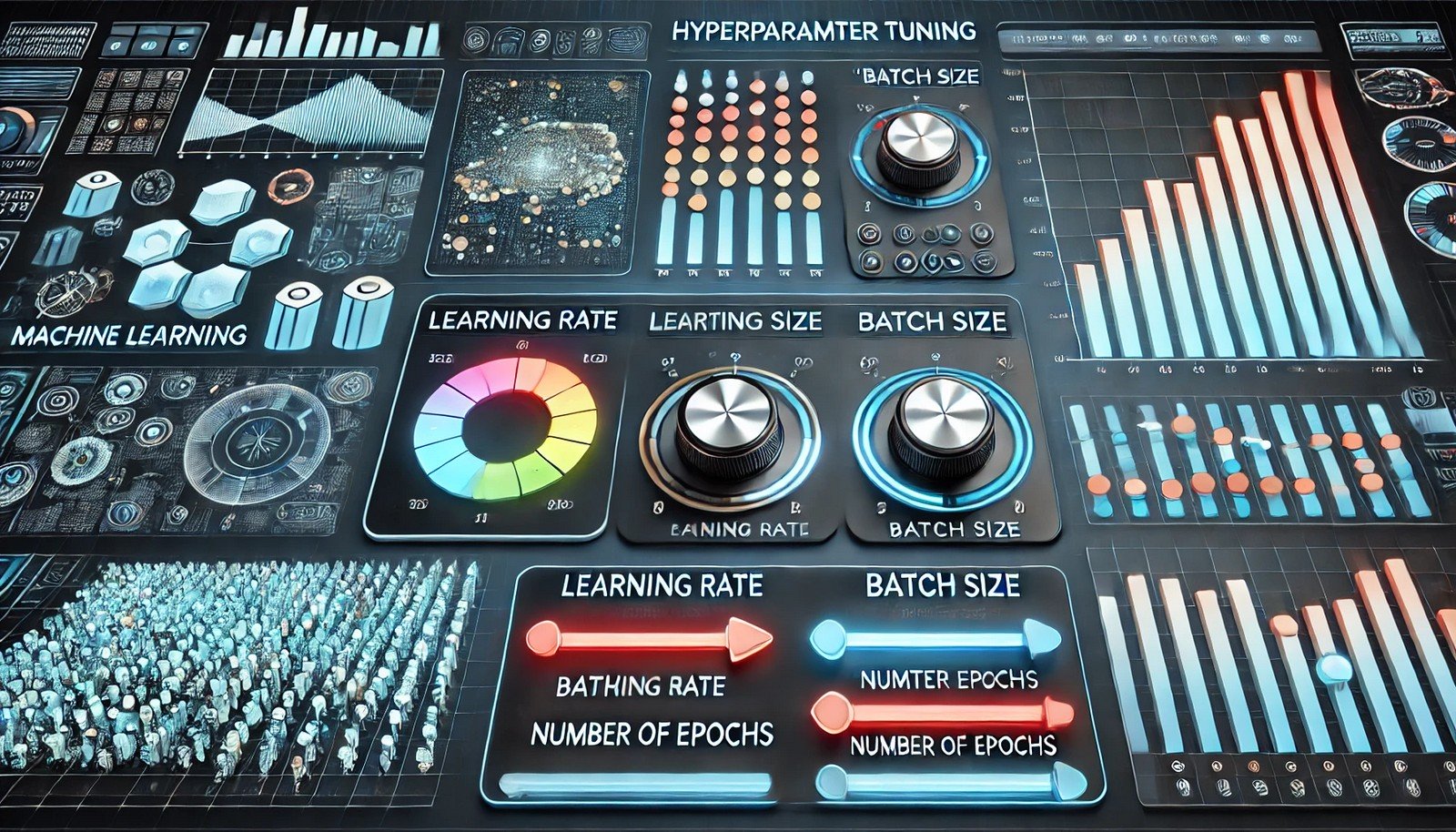Hyperparameter Tuning

Quick Navigation:
- Hyperparameter Tuning Definition
- Hyperparameter Tuning Explained Easy
- Hyperparameter Tuning Origin
- Hyperparameter Tuning Etymology
- Hyperparameter Tuning Usage Trends
- Hyperparameter Tuning Usage
- Hyperparameter Tuning Examples in Context
- Hyperparameter Tuning FAQ
- Hyperparameter Tuning Related Words
Hyperparameter Tuning Definition
Hyperparameter tuning is the process of selecting the best parameters for a machine learning model before training begins. Hyperparameters are configuration settings that control the behavior of the training process, such as learning rate, batch size, and the number of epochs. Unlike model parameters, which are learned during training, hyperparameters are set manually and significantly impact a model's accuracy and performance. By optimizing hyperparameters, data scientists aim to enhance the model's ability to generalize and perform well on unseen data, often using techniques like grid search, random search, or Bayesian optimization.
Hyperparameter Tuning Explained Easy
Think of hyperparameter tuning like baking cookies. Imagine you’re trying to find the perfect baking time and oven temperature. If the temperature is too high or the time is too long, your cookies might burn. If it’s too low or too short, they’re undercooked. Hyperparameter tuning in machine learning works similarly – it's about finding the best settings (like the temperature and time for cookies) so the model "bakes" just right and makes good predictions.
Hyperparameter Tuning Origin
The practice of hyperparameter tuning became essential as machine learning techniques developed in the 20th century. With the rise of deep learning and complex models, finding optimal hyperparameters became crucial for efficient and accurate model performance, leading to more systematic tuning methods.
Hyperparameter Tuning Etymology
"Hyperparameter" is derived from the Greek prefix "hyper-" meaning "over" or "above" and "parameter," indicating a variable that defines a system's properties. Tuning refers to adjusting these values for optimal performance.
Hyperparameter Tuning Usage Trends
The concept of hyperparameter tuning has gained prominence with the growth of deep learning and high-dimensional models. As computational power increased, hyperparameter optimization became more accessible, allowing even small-scale research teams to tune models effectively. Today, automated tuning frameworks and cloud-based solutions further expand the reach of hyperparameter tuning across various machine learning fields, including natural language processing, computer vision, and robotics.
Hyperparameter Tuning Usage
- Formal/Technical Tagging: Machine Learning, Model Optimization, Artificial Intelligence
- Typical Collocations:
- Hyperparameter tuning techniques
- Optimizing hyperparameters
- Hyperparameter selection
- Automated hyperparameter tuning
Hyperparameter Tuning Examples in Context
- In a neural network model, hyperparameter tuning can improve performance by adjusting parameters such as the learning rate and batch size.
- Hyperparameter tuning often involves a trade-off between accuracy and computational efficiency, requiring careful balancing.
- Many machine learning libraries, like Scikit-Learn, offer tools for hyperparameter tuning to enhance model accuracy on test data.
Hyperparameter Tuning FAQ
- What is hyperparameter tuning?
Hyperparameter tuning is the process of selecting the best configuration settings for a model before training. - Why is hyperparameter tuning important?
It helps in improving the model's performance and generalization on new data. - What are common hyperparameters in machine learning?
Learning rate, batch size, number of epochs, and regularization strength are common hyperparameters. - What’s the difference between parameters and hyperparameters?
Parameters are learned by the model during training, while hyperparameters are set before training. - How is hyperparameter tuning done?
Techniques include grid search, random search, and Bayesian optimization. - Can hyperparameter tuning be automated?
Yes, using tools like AutoML, hyperparameter tuning can be automated. - Is hyperparameter tuning computationally expensive?
It can be, especially with large models or extensive search spaces. - What is grid search in hyperparameter tuning?
Grid search is an exhaustive search method that tries every possible combination of hyperparameters. - Why is random search used in hyperparameter tuning?
Random search is faster than grid search and often finds good combinations by exploring the space randomly. - What is Bayesian optimization for hyperparameter tuning?
Bayesian optimization uses a probabilistic model to select promising hyperparameters and optimize tuning.
Hyperparameter Tuning Related Words
- Categories/Topics: Machine Learning, Deep Learning, Model Optimization
- Word Families: Parameter, Optimization, Calibration, Configuration
Did you know?
Hyperparameter tuning can sometimes yield surprising results. For instance, in deep learning, researchers have discovered that slightly higher dropout rates (a form of hyperparameter) improve performance in tasks like image classification, even though it means losing more data temporarily. This counterintuitive result has influenced hyperparameter tuning practices in deep learning.
PicDictionary.com is an online dictionary in pictures. If you have questions or suggestions, please reach out to us on WhatsApp or Twitter.Authors | Arjun Vishnu | @ArjunAndVishnu

I am Vishnu. I like AI, Linux, Single Board Computers, and Cloud Computing. I create the web & video content, and I also write for popular websites.
My younger brother, Arjun handles image & video editing. Together, we run a YouTube Channel that's focused on reviewing gadgets and explaining technology.



Comments powered by CComment